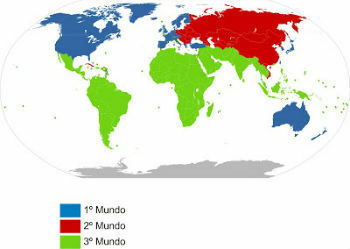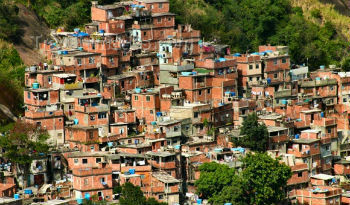Underdeveloped countries or in development are those with characteristics such as poverty, poor income distribution, low life expectancy, among others.
Term Origin
The term "underdeveloped" was used after World War II to explain the difference between industrialized countries and those exporting raw materials.
The countries where a large part of the industry was located and were major exporters were called developed countries.
Those who were dependent on agriculture or natural resources were designated as underdeveloped.
At this time, due to the Cold War, countries were also classified as “worlds”. In this way there were:
- 1st World: democratic, capitalist and industrialized countries;
- 2nd World: countries with socialist and industrialized regime;
- 3rd World: countries with fragile democracy, capitalist and agricultural or semi-industrialized.

Features
Most underdeveloped countries are located in the southern hemisphere and were colonized by European powers or occupied by the United States.
Likewise, they lived under dictatorial regimes where corruption among the leaders was widespread and little was done to combat it.
Today, the term “developing” is used to designate these countries, as several have managed to improve their infant mortality rates, for example.
Likewise, the term is used emerging countries to highlight those that can grow economically within a decade or two.

Developing countries have in common:
- Child labor;
- malnutrition;
- High illiteracy rates;
- Few Life expectancy;
- high rates of child mortality;
- Social inequality;
- Poor health and education system;
- Corruption involving various sections of the population.
What are the Underdeveloped Countries?
Currently, countries are classified according to the Human development Index which takes into account aspects such as education, per capita income and access to health.

This is a list of the poorest countries in the world, according to 2015 IMF and UN data:
Africa
- Central African Republic
- Democratic Republic of Congo
- Malawi
- Liberia
- Burundi
- Nigeria
- Eritrea
- guinea
- Madagascar
South America
- Bolivia
- Ecuador
- Paraguay
Central America and the Caribbean
- Haiti
- Guatemala
- Nicaragua
Asia
- Afghanistan
- Bangladesh
- Burma
- Bhutan
- Nepal
- Pakistan
- Sri Lanka
- Maldives Islands
Oceania
- Papua New Guinea
- Solomon Islands
- Samoa
read more:
- South American countries
- African countries
- Asian countries
- world hunger
- Latin America
- Labor market



